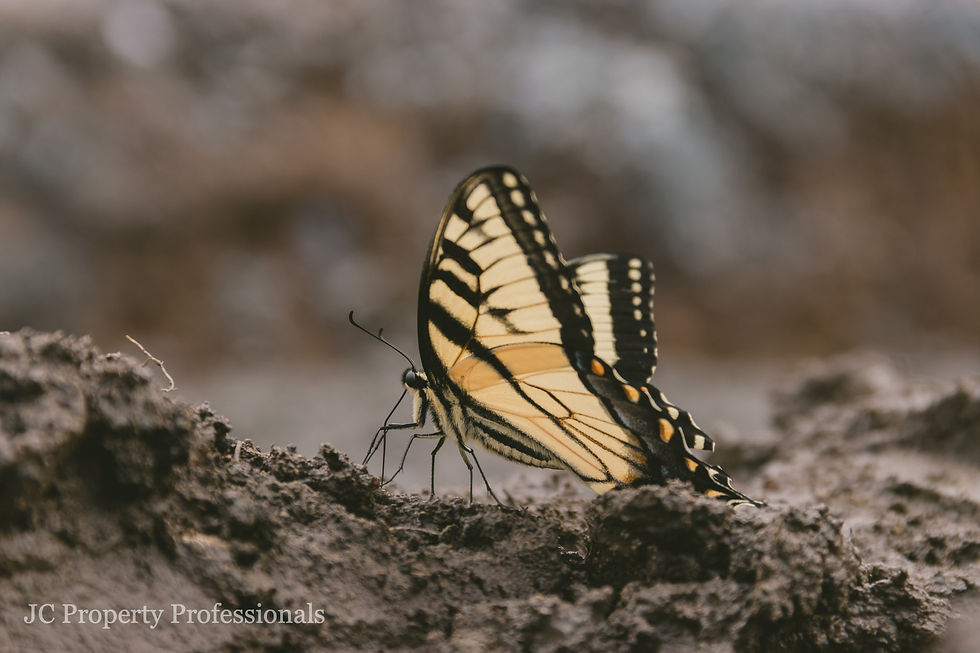It always puts a smile on our crew's faces to stop and admire the wildlife working and living alongside us. Working outside in western North Carolina definitely has its perks! We sure are lucky to be living and working in the NC mountains. This week we're sharing some fun facts about a few of our favorite wildlife work buddies.
Eastern Tiger Swallowtail

During the warmer months, the Eastern Tiger Swallowtail can be found on almost all of our job sites. This photo was snagged on a commercial site prep in Banner Elk. This butterfly is arguably one of the most recognizable in North Carolina, being found in all 100 counties. The commonality of this swallowtail in our home state has made it the official North Carolina state butterfly.
American Caesar Amanita Mushrooms

These bright sunset-colored mushrooms start out as egg-shaped into a mature fungus with a wide cap and "veil" on the stem. These fun-guys can grow to be almost a whole foot tall in just one to two days' time. The unique pattern seen on the stem is made up of red fibers from the yellow body – an important feature in identification.
Green Lynx Spider

These vicious spiders are predators to insects other spiders couldn't dream of catching. They wrap up butterflies and even bumble bees to make long-lasting snacks. They can often be found hiding out in green vegetation. This one was a little confused as he was trying to blend into this green fence post at our daycare renovation job at McDowell Technical Community College.
Eastern Fence Lizard
Our photographer spotted this guy on a finished house site in Hendersonville. The bright patch of blue on the throat and belly of this guy lets us know that he's male. Eastern Fence's are North Carolina's only lizard with rough appearing skin. They can be spotted in dry and wooded areas hanging out among the rocks and trees.
Blue Ridge Gray-Cheeked Salamander
Given their love for temperate forests, it's no surprise we spotted this terrestrial salamander making his way through the fresh dirt at this mountainside construction site in Banner Elk. When these salamanders feel threatened, they may release a noxious and sticky substance – good thing our photographer didn't attempt a closer look. Gray-Cheeks are only found in North Carolina, where they lack protected status.





Commentaires